Instruction
The Case for Putting Instruction Part 2: Fundamentals and Drills
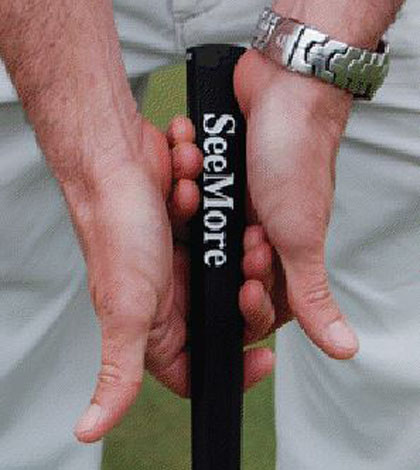
Last month I tried to persuade readers to treat the flat stick with respect when it comes to practice and lessons (You can read it here). In this follow up, I’ll address the so-called fundamentals of putting — grip, alignment, posture and ball position. You’ll also find some useful drills to help you practice putting with concrete objectives and feedback at home or at the course.
Keep in mind that while this piece is somewhat long, many of these ideas are the ones that have been the foundation of great putting careers of players like Payne Stewart and Zack Johnson and countless players who used the SeeMore putting system only in training because their staff contracts with other equipment manufacturers.
Grip
We only need to turn on the Golf Channel, or read articles about ongoing debate over anchoring to know that the putting grip is the most hotly debated topics in golf right now. I am not going to address the validity of belly or long putters here, because that’s not the purpose of this article. As far as a conventional putting grip goes, rule No. 1 is that the hands should oppose each other (as if palms were facing each other) because we don’t want either side fighting the other.
It’s notable that Tiger Woods recently regained his putting prowess after Steve Stricker pointed out that the stronger left hand grip Tiger uses for his full swing had crept into his putting. Once Tiger neutralized his grip so his hands were facing each other, he started putting lights out again. Rule No. 2 is that the club should rest in the fingers of both hands with minimal tension. A phrase I use with my juniors is “hot dog in the bun.” This will have a few positive effects — it will prevent your rear hand (the right hand for right handed golfers) from rolling over the front during the stroke, which can easily happen when you hold the grip in your lifeline. It will also get the shaft of the putter to look like an extension of your forearms (when viewed from behind) — a key to a consistent stroke. What many golfers don’t know is that good posture at address can greatly reduce the effect of the rear hand in the stroke, but I’ll get to that in a moment. So, to summarize, the keys to a conventional putting grip are hands facing each other and grip cradled in the fingers with minimal tension.
Alignment
There are great players who have not lined their body up parallel to the target line when they putted. Jack Nicklaus used an open stance and Jim Furyk stands closed to the target line. The point I try to make to my students (as kindly as possible) is that none of them have the combination of a PGA Tour player’s long-term muscle memory, practice time and physical gifts. Most amateurs need a simple and neutral putting stance because that makes it easy to repeat under pressure with a limited practice schedule.
Standing parallel to the target line with your eyes and shoulders parallel sets you up to make a simple and repeatable stroke without any manipulation. The real alignment key is that the putter absolutely must be aimed at your intended target because face angle, not path, exerts the majority of control over the direction the ball travels.
The first step is to figure out whether you are in fact aiming at your target. The first thing I do with my students is measure their alignment using a device made by SeeMore called the Triangulator which can be purchased for $15 on the company’s website. There are a variety of laser aiming devices that are much more expensive, but the Triangulator does the job just as well. The vast majority of players I work with, including low handicap amateurs and a few professionals, aimed substantially wide of their target on a ten foot putt when I first measured them.
Once you establish what your aiming fault is, you can begin working to correct the alignment of your body and the club face. I use a SeeMore putter and encourage my students to do the same because they are the only putters that help a golfer learn to consistently line up the club and their body while they practice, and keep them on track while they play. So, if you wanted two catch phrases for the keys to putting alignment, they are “putter face aimed at the intended target” and “eyes, shoulders and feet parallel to the target line.”
Posture
Good posture is probably the most important element of great putting. In the mid to late 20th century, grass on greens was longer and professionals and amateurs had to give the ball a pop with their wrists to get it out of its depression on the green and rolling on the putting surface. Advances in technology created faster and firmer putting surfaces and rendered that method useless. To make the consistently smooth stroke required on modern greens, we have to be able to rotate our shoulders around our spine, and to do that our shoulders have to be in line, not slouched. The sensation should be that the muscles between your shoulder blades are pulling them back so your shoulders are straight.
The more a player slouches their shoulders, the greater the chance the small muscles in their forearms, wrists and hands will take over the stroke because the shoulders can’t turn, especially under pressure. Excellent posture is what almost all of the great putters currently on Tour share. Along with changing his grip, Tiger correcting his posture was the thing he attributed to his putting renaissance this season. Tiger is the model of good putting posture and we should all emulate him at address. For simplicity’s sake, the catch phrase for posture should be “shoulders back, 45 degree bend at the waist.” You may find that you need a longer putter after adopting this posture.
Ball Position
Conventional wisdom in putting has been that the ball should be positioned off of the heel of the foot closest to the target — the left foot for a right-handed player. The problem with this is that if the player’s posture is good (as described above) and he is standing with his shoulders aimed at the target, his hands should hang naturally, straight down from his sternum. If the ball is positioned off of his front foot, the player has to make a compensation to get his hands over the ball at address. One of the great benefits of the Rifle Scope Technology used on every SeeMore putter is that the putter itself will tell you when your hands and head are directly over the blade — when you hide the red dot and trap the shaft between the white lines. To make a smooth stroke that is based on shoulder rotation and not hand manipulation, the putter should be in the center of your stance and the ball just to the left. The result is a solid, relaxed and neutral set up that is easy to repeat and because it is free of manipulation. Your ball position key should be “ball just left of center, eyes over the heel of the putter.”
A Few Drills
Practice drills serve two purposes — there are those that help a player groove technique, and there are those that help him learn how to perform by simulating the pressure of playing situations during practice. Both are useful, but you have to know what you’re trying to accomplish before you decide how to spend your time.
One of my favorite drills is to have a student practice rolling a ball down a metal yardstick to a cup or target. The best part of the drill is that you can use the back edge of the ruler to confirm proper aim and alignment before you hit the putt. You can also use it to get visual feedback that you are making a good arc practice stroke before hitting a putt. Using the SeeMore Triangulator (above and below) also helps identify and confirm proper alignment.
The ladder drill (above left) is probably my favorite pressure simulation drill. If you want to learn how to make short putts when they matter, being able to make it around a circle of 12 tees from varying lengths, holing putts of different speed and breaks is the best way to test your nerve. You can also adjust the length of the putts or set them up on more severe slopes to increase the difficulty.
A Pair of Trained Eyes
I hope these fundamental and drills will lead you toward more effective practice. Remember to check in with your local putting teacher whenever you need help. Putting may not seem as technical as the full swing, but as I think I demonstrated this piece and in Part 1, putting is more important to your overall scoring than any other part of your game and we all need a pair of trained eyes to help us accomplish those things as often as possible.
Instruction
The Wedge Guy: Beating the yips into submission

There may be no more painful affliction in golf than the “yips” – those uncontrollable and maddening little nervous twitches that prevent you from making a decent stroke on short putts. If you’ve never had them, consider yourself very fortunate (or possibly just very young). But I can assure you that when your most treacherous and feared golf shot is not the 195 yard approach over water with a quartering headwind…not the extra tight fairway with water left and sand right…not the soft bunker shot to a downhill pin with water on the other side…No, when your most feared shot is the remaining 2- 4-foot putt after hitting a great approach, recovery or lag putt, it makes the game almost painful.
And I’ve been fighting the yips (again) for a while now. It’s a recurring nightmare that has haunted me most of my adult life. I even had the yips when I was in my 20s, but I’ve beat them into submission off and on most of my adult life. But just recently, that nasty virus came to life once again. My lag putting has been very good, but when I get over one of those “you should make this” length putts, the entire nervous system seems to go haywire. I make great practice strokes, and then the most pitiful short-stroke or jab at the ball you can imagine. Sheesh.
But I’m a traditionalist, and do not look toward the long putter, belly putter, cross-hand, claw or other variation as the solution. My approach is to beat those damn yips into submission some other way. Here’s what I’m doing that is working pretty well, and I offer it to all of you who might have a similar affliction on the greens.
When you are over a short putt, forget the practice strokes…you want your natural eye-hand coordination to be unhindered by mechanics. Address your putt and take a good look at the hole, and back to the putter to ensure good alignment. Lighten your right hand grip on the putter and make sure that only the fingertips are in contact with the grip, to prevent you from getting to tight.
Then, take a long, long look at the hole to fill your entire mind and senses with the target. When you bring your head/eyes back to the ball, try to make a smooth, immediate move right into your backstroke — not even a second pause — and then let your hands and putter track right back together right back to where you were looking — the HOLE! Seeing the putter make contact with the ball, preferably even the forward edge of the ball – the side near the hole.
For me, this is working, but I am asking all of you to chime in with your own “home remedies” for the most aggravating and senseless of all golf maladies. It never hurts to have more to fall back on!
Instruction
Looking for a good golf instructor? Use this checklist

Over the last couple of decades, golf has become much more science-based. We measure swing speed, smash factor, angle of attack, strokes gained, and many other metrics that can really help golfers improve. But I often wonder if the advancement of golf’s “hard” sciences comes at the expense of the “soft” sciences.
Take, for example, golf instruction. Good golf instruction requires understanding swing mechanics and ball flight. But let’s take that as a given for PGA instructors. The other factors that make an instructor effective can be evaluated by social science, rather than launch monitors.
If you are a recreational golfer looking for a golf instructor, here are my top three points to consider.
1. Cultural mindset
What is “cultural mindset? To social scientists, it means whether a culture of genius or a culture of learning exists. In a golf instruction context, that may mean whether the teacher communicates a message that golf ability is something innate (you either have it or you don’t), or whether golf ability is something that can be learned. You want the latter!
It may sound obvious to suggest that you find a golf instructor who thinks you can improve, but my research suggests that it isn’t a given. In a large sample study of golf instructors, I found that when it came to recreational golfers, there was a wide range of belief systems. Some instructors strongly believed recreational golfers could improve through lessons. while others strongly believed they could not. And those beliefs manifested in the instructor’s feedback given to a student and the culture created for players.
2. Coping and self-modeling can beat role-modeling
Swing analysis technology is often preloaded with swings of PGA and LPGA Tour players. The swings of elite players are intended to be used for comparative purposes with golfers taking lessons. What social science tells us is that for novice and non-expert golfers, comparing swings to tour professionals can have the opposite effect of that intended. If you fit into the novice or non-expert category of golfer, you will learn more and be more motivated to change if you see yourself making a ‘better’ swing (self-modeling) or seeing your swing compared to a similar other (a coping model). Stay away from instructors who want to compare your swing with that of a tour player.
3. Learning theory basics
It is not a sexy selling point, but learning is a process, and that process is incremental – particularly for recreational adult players. Social science helps us understand this element of golf instruction. A good instructor will take learning slowly. He or she will give you just about enough information that challenges you, but is still manageable. The artful instructor will take time to decide what that one or two learning points are before jumping in to make full-scale swing changes. If the instructor moves too fast, you will probably leave the lesson with an arm’s length of swing thoughts and not really know which to focus on.
As an instructor, I develop a priority list of changes I want to make in a player’s technique. We then patiently and gradually work through that list. Beware of instructors who give you more than you can chew.
So if you are in the market for golf instruction, I encourage you to look beyond the X’s and O’s to find the right match!
Instruction
What Lottie Woad’s stunning debut win teaches every golfer

Most pros take months, even years, to win their first tournament. Lottie Woad needed exactly four days.
The 21-year-old from Surrey shot 21-under 267 at Dundonald Links to win the ISPS Handa Women’s Scottish Open by three shots — in her very first event as a professional. She’s only the third player in LPGA history to accomplish this feat, joining Rose Zhang (2023) and Beverly Hanson (1951).
But here’s what caught my attention as a coach: Woad didn’t win through miraculous putting or bombing 300-yard drives. She won through relentless precision and unshakeable composure. After watching her performance unfold, I’m convinced every golfer — from weekend warriors to scratch players — can steal pages from her playbook.
Precision Beats Power (And It’s Not Even Close)
Forget the driving contests. Woad proved that finding greens matters more than finding distance.
What Woad did:
• Hit it straight, hit it solid, give yourself chances
• Aimed for the fat parts of greens instead of chasing pins
• Let her putting do the talking after hitting safe targets
• As she said, “Everyone was chasing me today, and managed to maintain the lead and played really nicely down the stretch and hit a lot of good shots”
Why most golfers mess this up:
• They see a pin tucked behind a bunker and grab one more club to “go right at it”
• Distance becomes more important than accuracy
• They try to be heroic instead of smart
ACTION ITEM: For your next 10 rounds, aim for the center of every green regardless of pin position. Track your greens in regulation and watch your scores drop before your swing changes.
The Putter That Stayed Cool Under Fire
Woad started the final round two shots clear and immediately applied pressure with birdies at the 2nd and 3rd holes. When South Korea’s Hyo Joo Kim mounted a charge and reached 20-under with a birdie at the 14th, Woad didn’t panic.
How she responded to pressure:
• Fired back with consecutive birdies at the 13th and 14th
• Watched Kim stumble with back-to-back bogeys
• Capped it with her fifth birdie of the day at the par-5 18th
• Stayed patient when others pressed, pressed when others cracked
What amateurs do wrong:
• Get conservative when they should be aggressive
• Try to force magic when steady play would win
• Panic when someone else makes a move
ACTION ITEM: Practice your 3-6 foot putts for 15 minutes after every range session. Woad’s putting wasn’t spectacular—it was reliable. Make the putts you should make.
Course Management 101: Play Your Game, Not the Course’s Game
Woad admitted she couldn’t see many scoreboards during the final round, but it didn’t matter. She stuck to her game plan regardless of what others were doing.
Her mental approach:
• Focused on her process, not the competition
• Drew on past pressure situations (Augusta National Women’s Amateur win)
• As she said, “That was the biggest tournament I played in at the time and was kind of my big win. So definitely felt the pressure of it more there, and I felt like all those experiences helped me with this”
Her physical execution:
• 270-yard drives (nothing flashy)
• Methodical iron play
• Steady putting
• Everything effective, nothing spectacular
ACTION ITEM: Create a yardage book for your home course. Know your distances to every pin, every hazard, every landing area. Stick to your plan no matter what your playing partners are doing.
Mental Toughness Isn’t Born, It’s Built
The most impressive part of Woad’s win? She genuinely didn’t expect it: “I definitely wasn’t expecting to win my first event as a pro, but I knew I was playing well, and I was hoping to contend.”
Her winning mindset:
• Didn’t put winning pressure on herself
• Focused on playing well and contending
• Made winning a byproduct of a good process
• Built confidence through recent experiences:
- Won the Women’s Irish Open as an amateur
- Missed a playoff by one shot at the Evian Championship
- Each experience prepared her for the next
What this means for you:
• Stop trying to shoot career rounds every time you tee up
• Focus on executing your pre-shot routine
• Commit to every shot
• Stay present in the moment
ACTION ITEM: Before each round, set process goals instead of score goals. Example: “I will take three practice swings before every shot” or “I will pick a specific target for every shot.” Let your score be the result, not the focus.
The Real Lesson
Woad collected $300,000 for her first professional victory, but the real prize was proving that fundamentals still work at golf’s highest level. She didn’t reinvent the game — she simply executed the basics better than everyone else that week.
The fundamentals that won:
• Hit more fairways
• Find more greens
• Make the putts you should make
• Stay patient under pressure
That’s something every golfer can do, regardless of handicap. Lottie Woad just showed us it’s still the winning formula.
FINAL ACTION ITEM: Pick one of the four action items above and commit to it for the next month. Master one fundamental before moving to the next. That’s how champions are built.
PGA Professional Brendon Elliott is an award-winning coach and golf writer. You can check out his writing work and learn more about him by visiting BEAGOLFER.golf and OneMoreRollGolf.com. Also, check out “The Starter” on RG.org each Monday.
Editor’s note: Brendon shares his nearly 30 years of experience in the game with GolfWRX readers through his ongoing tip series. He looks forward to providing valuable insights and advice to help golfers improve their game. Stay tuned for more Tips!






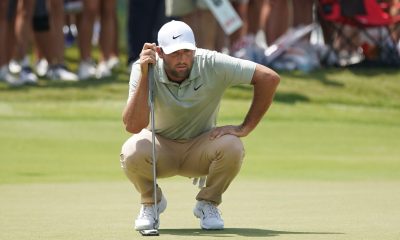

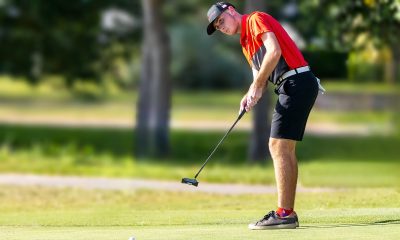

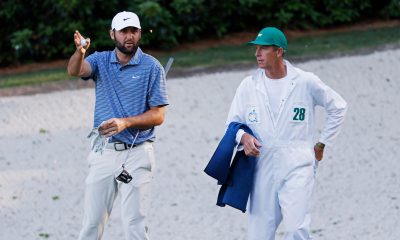

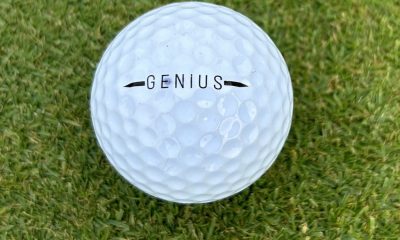



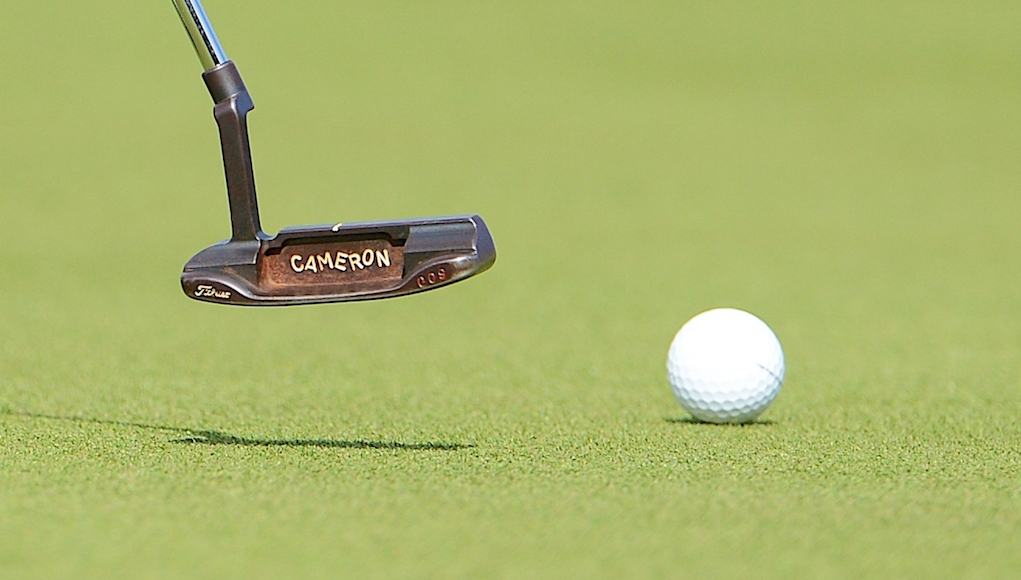








matt S.
Jan 7, 2016 at 12:04 am
I find that if I follow the rifle scope with my eyes while putting, I can’t miss…but I hear that you should keep your head straight. What are your thoughts on where the eyes should be before, and during your stroke?
rtylerg
Apr 26, 2013 at 10:37 am
Hi Paul,
Tyler here. This article has got me questioning my current putting technique. I’ve been trying to incorporate a traditional “life line” of the hands putting grip. However you say that it’s better to have the grip in the fingers and the hands facing each other. I’d like to learn more about this grip style. Can you describe in detail how you grip the putter in this method? Thanks!
Paul Kaster
Apr 26, 2013 at 8:35 pm
Hi Tyler, thanks for the question. To grip the club in the fingers, start by setting up with proper posture (shoulders back, 45 degree bend at the waist). Then, whether you interlock, reverse overlap, etc., you just set the grip in the first joints of the fingers (between the first and second row of phalanges) in both hands. Cradling the grip this way, you should be able to support the putter and make a natural stroke by turing your shoulders, even without your thumbs on the grip (see the first photo above). All you need to do after this is naturally set the thumps on the top of the grip with minimal tension and your hands should be facing each other. Putting in this position, putter should naturally rotate on an arc and square itself at impact when you turn your shoulders. Using a center shafted putter will definitely help as well. Good luck!
Caddy
May 8, 2013 at 11:09 am
I can let you know I have played with and caddie for Paul and he used to putt in the palm ………I’m glad he’s using this finger method because I have started doing it as well and my putting is super nice now………as for the first comment this is no PR stunt Paul feels strong about the Seemore line up system its like a helper in pressure situations
Stan Couples
Apr 25, 2013 at 3:24 pm
nice article – the question that everyone needs to ask themselves is “do you know why you putt that way?” I believe most people can not answer this question. Paul here has a system or an idea why he putts a certain way and teaches it.
Paul Kaster
Apr 26, 2013 at 8:17 pm
Thanks Stan! I think you’re exactly right about knowing how and why we putt the way we do. I chose this method because I’d always been a very streaky putter and this made me much more consistent and confident under tournament pressure. I was so impressed, I decided to become a certified instructor. If one’s putting method amounts to a collection of conventional wisdom and tips picked up along the way, there is nothing coherent or solid to reach for when things go wrong.
Pingback: Las ridículas expectativas que tenemos los golfistas | Golf76.com
Nice PR campaign
Apr 25, 2013 at 10:26 am
A bit too much of a “one size fits” all opinion article.
Why make everything so “convential” if the golfer has to rebuild, relearn and hope it works better? I need to see some data and evidence that one size fits all.
Paul Kaster
Apr 25, 2013 at 2:33 pm
Thanks for your feedback. I’d address you by name, but I noticed you chose not to give it. Over 235 teachers internationally have chosen to teach this system because it works for them and for their students. There is very little rebuilding involved because the system is premised on neutral and natural posture. The purpose of the article was to give readers a chance to see what the SeeMore putting system is about, and whether it can work for them. Give it a try, you might just find you make more putts!